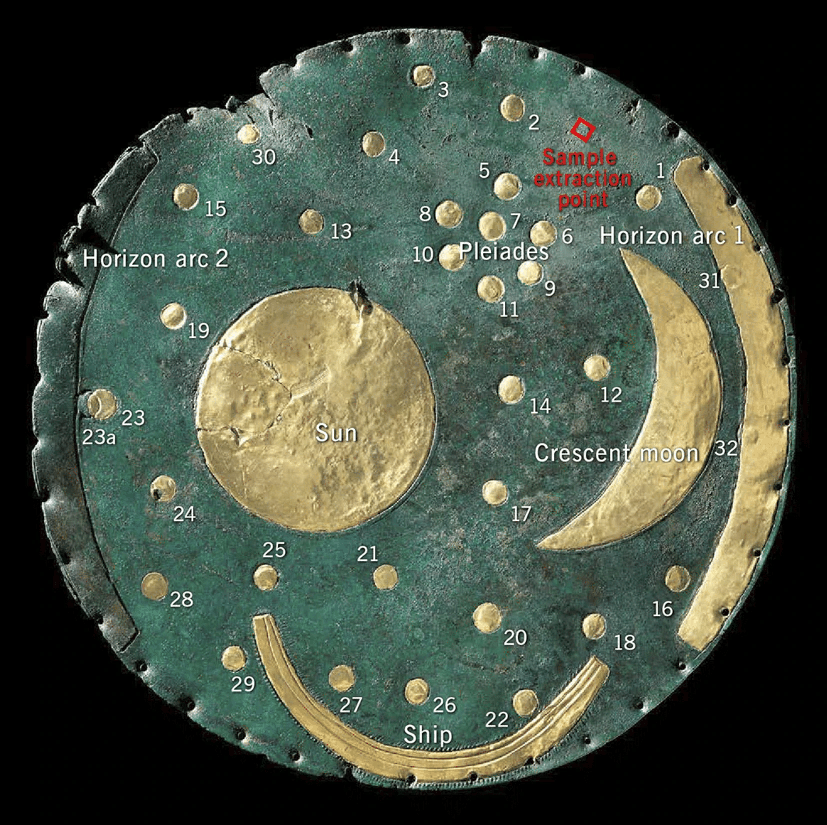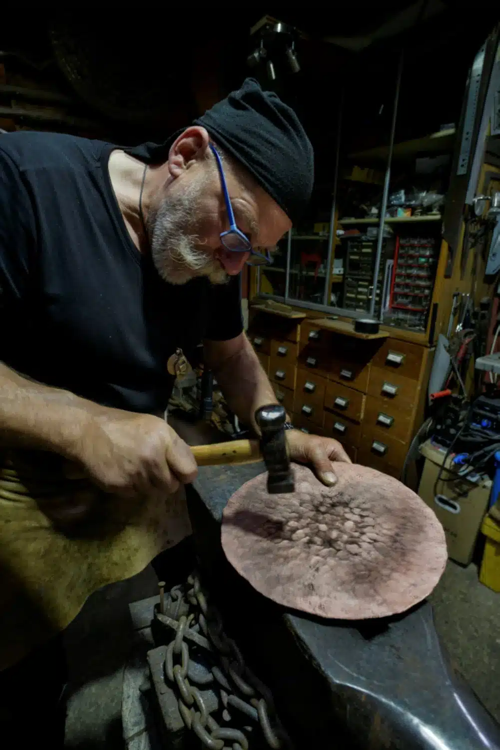The technology behind the creation of the Nebra Sky Disk has been unveiled.
Nebra is a city located in central Germany, approximately 60-70 kilometers from Leipzig. It was there that illegal treasure hunters discovered the celestial disk in 1999. The disk was found in an ancient burial site alongside bronze swords, axes, and magnificent bracelets. This location is home to a whole settlement from the Bronze Age.
The artifacts were dated to around 1600 BC. Archaeologists suspected that the metallic map of the night sky was actually created a few hundred years earlier. This suggests that it was preserved and passed down through generations.
The disk itself is primarily made of copper, with small additions of tin, nickel, zinc, and arsenic. It is believed that special solutions were used to give the background the color of the sky, a process known as patination. The inlay is made of gold.

In addition to the easily recognizable images of the Sun, Moon, and scattered stars, the pattern of the Pleiades constellation was identified in the sky, and the arc on the right edge serves as evidence that Bronze Age people conducted astronomical observations: it describes the angle between the position of our star during the summer and winter solstices. If you look closely, you can spot a trace of a similar arc on the left side. It has evidently not survived.
The meaning of another arc at the bottom is not entirely clear. Researchers have suggested that it could represent a boat, the Milky Way, or a rainbow. They concluded that the disk initially had a purely scientific purpose, but later its patterns began to be viewed more as mythological symbols.
In those times, such an object could only be made by hand, so scientists were curious about how the disk itself was crafted. It has a diameter of nearly 32 centimeters, with a thickness of 4.6 millimeters at the center and 1.5-1.8 millimeters at the edges. Researchers from Germany assured in an article published in the journal Scientific Reports that it was impossible to cast it in this form originally. They believe that the item was created from a compact lens-shaped cast blank.

Scientists decided to recreate the process of making the celestial disk and consulted blacksmiths. They managed to create several replicas of the masterpiece, closely following the basic technology of its creation during the process.
It turned out that ancient craftsmen had to gradually transform a thick blank into a thin disk by striking the hammer in a specific manner: they needed to hit while spiraling from the center to the edge. The blank had to be heated, but during the forging process, it quickly cooled down. Therefore, heating it to about 700 degrees Celsius and a series of hammer strikes had to be repeated a total of 10 times.
Moreover, different weights of hammers were required to achieve the desired form of the disk—starting with a five-kilogram hammer, then progressively lighter ones. Blacksmiths of the 21st century expressed admiration for how advanced the metalworking art was even in the early Bronze Age.